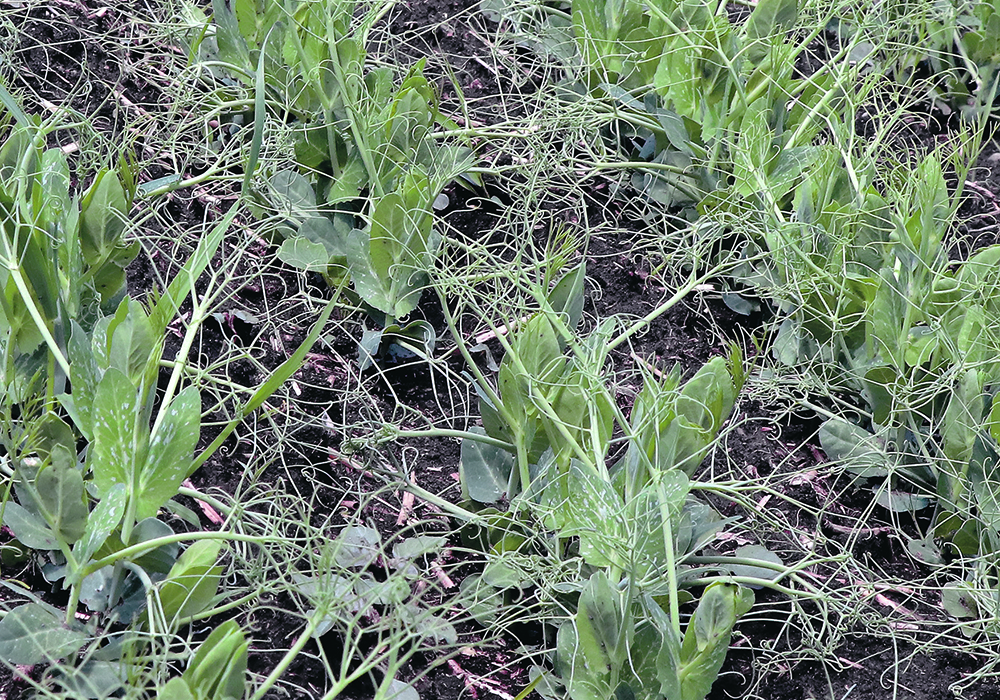Seeding pulse crops with a planter can improve seedling emergence and plant density under most conditions according to research conducted by Farming Smarter, an applied agronomy research organization out of Lethbridge.
There is increasing farmer interest in using planters for multiple crops grown on the Prairies because they are gentle on seed and provide uniform spacing, as well as precise depth and packing pressure, said Gurbir Dhillon of Farming Smarter.
The study examined chickpeas, lentils, fababeans, field peas and soybeans in three southern Alberta locations, Lethbridge, Medicine Hat, and Taber.
It was originally a four-year study, but it was challenged by drought conditions in two of the four years so another year was tacked on, and it will be run again this summer.
“We compared the air drill and the precision planter with narrow row spacing. We didn’t go for the wide row spacing because wide row spacing in the canola study didn’t really work. It led to yield drop compared to both the air drill and the narrow planter and under pretty much all situations,” Dhillon said.
He said Farming Smarter studied the efficacy of planting canola because of interest from the farming community.
That study found canola yield improved through precision planting under irrigated and high precipitation conditions compared to the air drill treatment.
The study was later expanded to include pulse crops.
“We decided to look into other crops because if producers are adopting these for canola they might as well look at other crops because these are pretty expensive equipment,” Dhillon said.
Two seeding rates were used for the pulse crops, the recommended seeding rate and 50 percent of the recommended rate.
“We saw better emergence for the planter under most conditions, especially for chickpea, field pea and fababeans. For the lentils, there wasn’t as much of an advantage with the emergence. The drought conditions really affected soybeans, so for soybeans we have less site years of data compared to the other pulse crops,” Dhillon said.
He said the treatments that were planted also had more uniform stands and staging later in the year.
“There were fewer empty spots within the stand so that helps with the weed competition because those empty spots can sometimes be where weeds can easily grow,” Dhillon said.
Having uniform crop staging can be helpful when it comes time to apply crop protection products including fungicides, as well as during harvest.
Fertilizer rates in the study were driven by soil tests with nitrogen applied as a side-band and phosphorus applied in the seed row for all treatments.
For most pulse crops, the study did not see a significant difference in yields, which Dhillon said may have been a factor of dry conditions.

However, with chickpeas there was a decent response to the planter treatment.
“We had three out of eight site years which had significantly higher yield (compared to the air seeded treatments), the average year was also about 25 percent higher,” Dhillon said.
“For fababeans and for field peas there was one out of eight sight years that had a significantly higher yield.”
Significantly, there were no instances where the planted pulses had a lower yield compared to the air seeder treatment.
Dhillon said an economic analysis was not part of the study, because these costs would vary dramatically between farms and the equipment used.
There has been producer interest in using planters for pulse crops, because some pulse seed can be fragile while some air seeders can be rough on seed.
Dhillon said the air seeder used in the trial was gentle on seed, which may be why the study did not obtain results that could be used to recommend a lower seeding rate with planters.
“You’re not really able to reduce the seeding rates through the use of planters. The higher seeding rate still yielded higher for both the air drill and the precision planter,” Dhillon said.
















